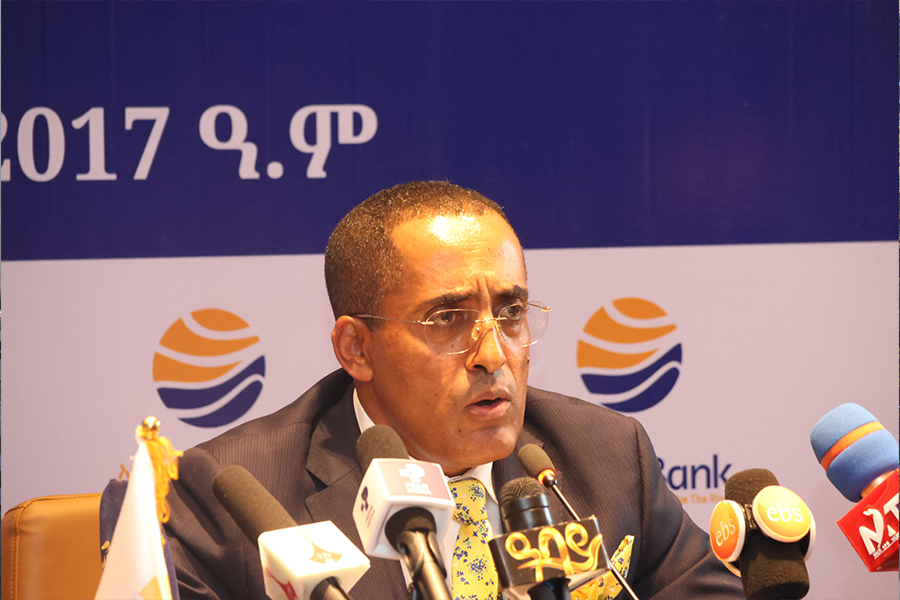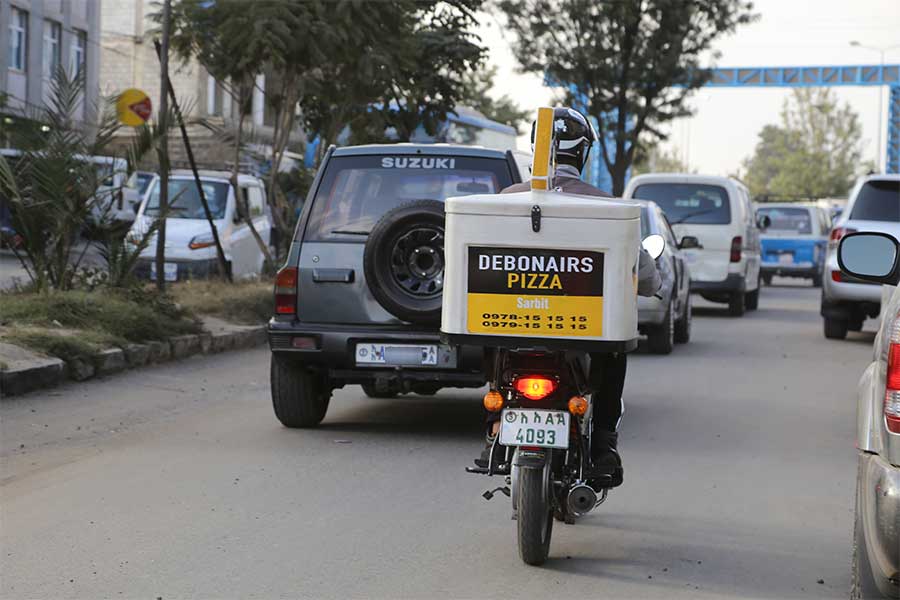
Apr 20 , 2024
By Jorge Moreira da Silva
The challenges in effectively disbursing IDA funds in conflict-affected countries show a broader, global issue of the implementation gap in international aid. Understanding and addressing these gaps becomes paramount as the world aims to meet the United Nations Sustainable Development Goals. Jorge Moreira da Silva, executive director of the United Nations Office for Project Services, writes in this commentary provided by Project Syndicate (PS) that the discussions at the World Bank spring meetings could set transformative precedents for future global aid distribution and effectiveness.
This week's World Bank spring meetings will kick-start the replenishment of the International Development Association (IDA) – the largest source of development finance for the world's poorest people. The event cannot come soon enough. With extreme poverty, climate change, and a worsening debt crisis jeopardising progress toward the United Nations Sustainable Development Goals (SDGs), IDA is more important than ever.
For many recipient countries, IDA often represents the only reliable, sustainable source of development finance. For donors, it offers good value for money: for every dollar mobilised through IDA, recipient countries receive around four dollars to support their development. But, as governments seek an ambitious replenishment of IDA's resources this year, we must maximise the impact of IDA dollars already in circulation.
With up to two-thirds of those living in extreme poverty expected to reside in fragile and conflict-affected countries by 2030, successful implementation of IDA-supported development projects in challenging contexts is vital. But, as new research by the International Rescue Committee (IRC) shows, disbursing IDA funds to projects that positively affect people's lives must overcome major barriers. During one recent IDA cycle, around 50pc of its financing commitments in conflict-affected, least-developed countries were not disbursed. The IRC's research highlights limited institutional capacity, especially in conflict-affected countries.
Such gaps can be explained mainly by the World Bank's low-risk threshold and an operating model that works primarily with and through national governments. This model can lead to project delays and suspensions, especially in conflict-affected countries, not least because of limited institutional capacity and a lack of relevant expertise and experience.
This highlights a crucial point. Too often, discussions about development goals like the SDGs focus on two gaps—in financing and policy—while failing to recognise the implementation gap. But finance and policy alone cannot overcome implementation bottlenecks; technical assistance and other support are also vital. This is a crucial focus of the United Nations Office for Project Services (UNOPS), which I have led for precisely one year.
UNOPS runs operations in over 80 countries on behalf of the UN system and global partners, such as the World Bank. Most of our work takes place in fragile and conflict-affected settings, and we are a major channel for implementing IDA-financed projects, among other humanitarian, development, and peace-and-security initiatives. We also help recipient governments make the most of the IDA funds they receive, working alongside other UN agencies to accelerate project delivery, overcome delays, and ensure the intended results.
Our experience, particularly in conflict zones, demonstrates the overwhelmingly positive impact IDA funds can have when we get implementation right. In South Sudan, for example, IDA and UN agencies worked together to implement a project focused on increasing poor and vulnerable households' access to temporary income opportunities. Since then, the security situation has improved sufficiently to begin handing full ownership of projects – reaching over 420,000 people across 10 counties – back to the South Sudanese government and local communities.
In Mozambique, UNOPS is working alongside the World Bank and the national government to restore basic services for 680,000 people internally displaced due to the conflict in the country's north or hosting displaced communities and returnees.
In Yemen, where the Bank cannot work through the government, the World Bank, with IDA financing, has worked with UN partners on the ground to deliver access to basic services. One project, implemented by UNICEF, the World Health Organization (WHO), and UNOPS, provided health and nutrition services to more than eight million Yemenis at more than 2,000 locations and by relying on mobile outreach teams. Such engagement helps preserve pre-crisis human capital gains and a degree of institutional stability, both essential to the eventual post-conflict recovery.
This capacity to implement projects even in crisis-affected areas, including conflict zones like Yemen, is essential to deliver on the SDGs. But so are efforts to prevent crises. These are particularly cost-effective interventions: for every dollar invested in prevention, around 16 dollars are saved in the long term. With any intervention, timing is key. As the World Bank has pointed out, investing in IDA funding early is imperative, especially in fragile contexts.
The World Bank's newly expanded Crisis Preparedness & response Toolkit promises to help countries respond to emergencies, from conflict to climate-related disasters, and prepare for future shocks. For example, it includes measures allowing governments to reallocate up to 10pc of undisbursed World Bank financing toward emergency response. This, together with other tools and welcome changes under the Bank's evolution and reform agenda, offers much-needed flexibility to countries in crisis.
This week's World Bank spring meetings offer a valuable opportunity to reflect on the IDA's critical role as a source of hope for those most in need – and commit to enhancing its impact even further. That means not only replenishing its resources but also recognising and addressing implementation gaps.
PUBLISHED ON
Apr 20,2024 [ VOL
25 , NO
1251]


Radar | Oct 12,2024

Featured | Nov 23,2019

Fortune News | Feb 06,2021

Commentaries | Jul 08,2023

Editorial | May 17,2025

My Opinion | 131584 Views | Aug 14,2021

My Opinion | 127940 Views | Aug 21,2021

My Opinion | 125915 Views | Sep 10,2021

My Opinion | 123539 Views | Aug 07,2021

Dec 22 , 2024 . By TIZITA SHEWAFERAW
Charged with transforming colossal state-owned enterprises into modern and competitiv...

Aug 18 , 2024 . By AKSAH ITALO
Although predictable Yonas Zerihun's job in the ride-hailing service is not immune to...

Jul 28 , 2024 . By TIZITA SHEWAFERAW
Unhabitual, perhaps too many, Samuel Gebreyohannes, 38, used to occasionally enjoy a couple of beers at breakfast. However, he recently swit...

Jul 13 , 2024 . By AKSAH ITALO
Investors who rely on tractors, trucks, and field vehicles for commuting, transporting commodities, and f...

Jun 28 , 2025
Meseret Damtie, the assertive auditor general, has never been shy about naming names...

Jun 21 , 2025
A well-worn adage says, “Budget is not destiny, but it is direction.” Examining t...

Jun 14 , 2025
Yet again, the Horn of Africa is bracing for trouble. A region already frayed by wars...

Jun 7 , 2025
Few promises shine brighter in Addis Abeba than the pledge of a roof for every family...

Jun 29 , 2025
Addis Abeba's first rains have coincided with a sweeping rise in private school tuition, prompting the city's education...

Jun 29 , 2025 . By BEZAWIT HULUAGER
Central Bank Governor Mamo Mihretu claimed a bold reconfiguration of monetary policy...

Jun 29 , 2025 . By BEZAWIT HULUAGER
The federal government is betting on a sweeping overhaul of the driver licensing regi...

Jun 29 , 2025 . By NAHOM AYELE
Gadaa Bank has listed 1.2 million shares on the Ethiopian Securities Exchange (ESX),...